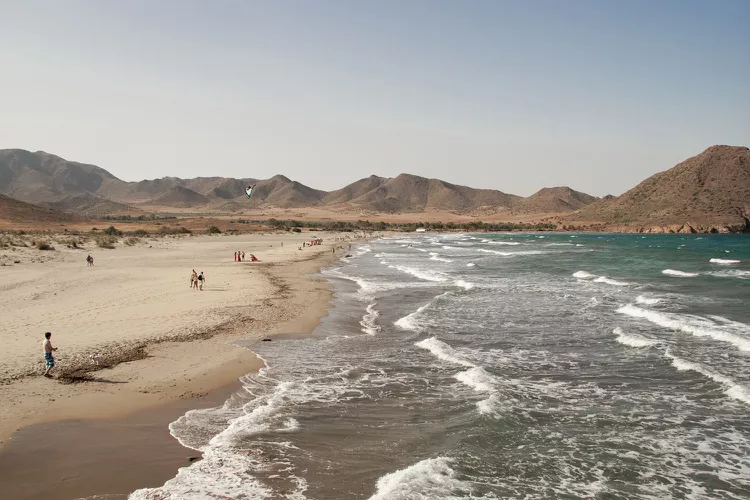Summary of Spain’s Essential Facts
Essential Facts About Spain
Where Is Spain? Spain is located on the Iberian peninsula in Europe, sharing this land with Portugal and Gibraltar. To the north-east lies its border with France and Andorra.
How Big Is Spain? With an area of 505,992 square kilometers, Spain ranks as the 51st largest country globally and the third largest in Europe, following France and Ukraine. It is slightly smaller than Thailand but larger than Sweden. Interestingly, Spain could fit into the United States 18 times!
Country Code: +34
Timezone: Spain operates under Central European Time (GMT+1), which has sparked debates regarding its appropriateness. Neighboring Portugal adheres to GMT, aligning geographically with Spain. Consequently, the sun rises and sets later in Spain than in most other parts of Europe, contributing to the country’s renowned nightlife. This timezone change occurred before World War II to align with Nazi Germany.
Capital: Madrid.
Population: The population of Spain is nearly 45 million, making it the 30th most populated country worldwide and the fourth in the EU, after Germany, France, and Italy. Notably, it possesses the lowest population density in Western Europe (excluding Scandinavia).
Religion: While most Spaniards identify as Catholic, Spain is officially a secular state. For over three centuries, the majority of Spain was under Muslim rule, concluding in 1492 with the fall of the last Moorish king in Granada.
Biggest Cities (by population):
- Madrid
- Barcelona
- Valencia
- Seville
- Zaragoza
Currency: The Euro is the sole currency used in Spain, having replaced the peseta in 2002, which itself had succeeded the escudo in 1869.
Official Language: The official language of Spain is Spanish, also known as Castellano or Castilian Spanish. Various autonomous communities in Spain recognize other official languages as well.
Government: Spain is a constitutional monarchy led by King Felipe VI, who ascended the throne in 2014 following his father, Juan Carlos I, who inherited the position from General Franco, the dictator who governed Spain from 1939 until 1975.
Spain’s Autonomous Regions
Spain comprises 19 autonomous regions: 15 on the mainland, two island groups, and two exclaves in North Africa. Castilla y Leon is the largest region, while La Rioja is the smallest.
The complete list of autonomous regions includes (with capitals):
- Madrid (Madrid)
- Catalonia (Barcelona)
- Valencia (Valencia)
- Andalusia (Seville)
- Murcia (Murcia)
- Castilla-La Mancha (Toledo)
- Castilla y Leon (Valladolid)
- Extremadura (Merida)
- Navarra (Pamplona)
- Galicia (Santiago de Compostela)
- Asturias (Oviedo)
- Cantabria (Santander)
- Basque Country (Vitoria)
- La Rioja (Logroño)
- Aragon (Zaragoza)
- Balearic Islands (Palma de Mallorca)
- Canary Islands (Las Palmas de Gran Canaria/Santa Cruz de Tenerife)

Famous Things About Spain
Famous Buildings & Monuments: Spain is home to iconic sites such as La Sagrada Familia, the Alhambra, and the Prado and Reina Sofia museums in Madrid.
Famous Spaniards: Spain boasts a rich history of notable figures, including artists like Francisco Goya, Diego Velazquez, and Pablo Picasso, as well as musicians like Placido Domingo and actors such as Antonio Banderas and Penelope Cruz. Additionally, sports figures like Rafael Nadal and Fernando Alonso have put Spain on the global stage.
What Else Is Spain Famous For? The country is famed for culinary contributions like paella and sangria, as well as historic routes like the Camino de Santiago. Moreover, even though the beret is often linked with France, it was actually invented by the Basques in north-east Spain.

Spanish Geography
Spain stands out as one of the most mountainous countries in Europe, with approximately 75% of its territory exceeding 500 meters above sea level. Significantly, a quarter of the land rises above one kilometer. The prominent mountain ranges include the Pyrenees and the Sierra Nevada, with the latter easily accessible for a day trip from Granada.
The country is known for its diverse ecosystems; for example, the southeastern region of Almeria may appear desert-like, while the northwest experiences rainy winters.
With over 8,000 kilometers of gorgeous beaches, the south and east coasts are ideal for sunbathing, while the north coast offers beautiful scenery and great surfing conditions.
Moreover, Spain has coastlines along both the Atlantic Ocean and the Mediterranean Sea, with the boundary between the two located in Tarifa.
Interestingly, Spain has a vast area dedicated to vineyards, outpacing any other country globally, although the arid soil results in a lower grape yield compared to other regions.
Disputed Territories: Spain claims Gibraltar, a British enclave on the Iberian peninsula. Concurrently, Morocco asserts sovereignty over the Spanish enclaves of Ceuta and Melilla in North Africa.
Additionally, Portugal has ownership claims over Olivenza, a town situated on the border between Spain and Portugal. It is noteworthy that Spain relinquished control over the Western Sahara in 1975.





